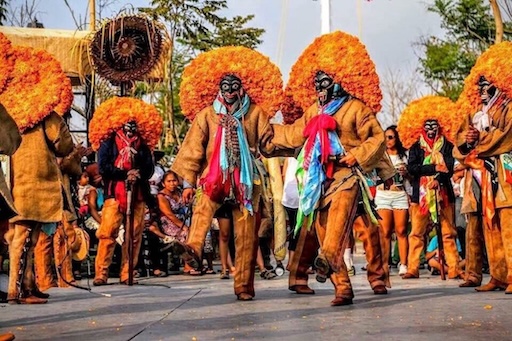
If you ever find yourself in the mountains of Guerrero during a village festival, don’t be alarmed if you see a man in a jaguar mask leaping at another dressed as a farmer swinging a whip. You haven’t stumbled into a surreal jungle nightmare — you’ve entered the world of the Tlacololeros.
This traditional dance isn’t just performance. It’s ritual. It’s agriculture. It’s humor. And it’s one of the most bizarrely beautiful traditions you’ve probably never heard of. Welcome to a celebration where farmers fight tigers to summon rain and protect their crops — all through dance.
What's a Tlacololero?
The word Tlacololero comes from the Nahuatl word tlacololli, which refers to a sloped plot of land used for planting maize. So, a tlacololero is essentially a man who works on that land — a mountain farmer. These farmers are at the heart of this dance, which is both a thank-you and a plea to nature.
The tradition is especially strong in communities around Chilpancingo, the capital of Guerrero. It’s often performed during patron saint festivals or agricultural celebrations, most notably during the feast of Saint James (Santiago) in July.
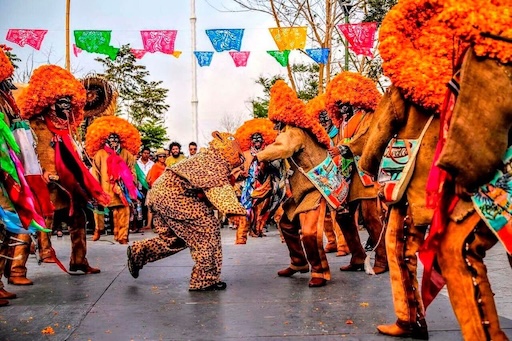
The Characters: Tigers, Farmers, and a Whole Lot of Mischief
The dance is a dramatization of the farmer's struggle against the forces that threaten his crops. The main characters include:
- El Tlacololero: The central figure, a farmer with a large hat, whip, and comic movements.
- El Tigre (Jaguar): Not actually a tiger, but a representation of the jaguar — a predator of livestock and crops.
- El Perro: The dog who helps the farmer track the jaguar.
- El Rastrojero: Another farmer or field helper, often mischievous and playful.
- El Mayordomo: The one who leads the ritual and often serves a ceremonial role.
The costumes are wild. The jaguar wears a hand-carved wooden mask painted with spots, plus a furry suit made from real or faux pelts. The farmers don oversized hats, bandanas, and sometimes masks with exaggerated features. Everyone wears bells, ribbons, and rattles that jingle with every stomp and spin.
Rain, Ritual, and Resistance
At its core, the Tlacololeros dance is about petitioning for rain. In an area where agriculture is deeply dependent on the rhythm of nature, these dances are a form of prayer in motion. The drama between farmer and jaguar represents the constant struggle between civilization and wilderness, order and chaos, feast and famine.
But don’t expect it to be solemn. The dance is full of jokes, exaggerated movements, playful taunts, and audience interaction. It’s part ceremony, part comedy, and completely alive.

The Jaguar Is More Than a Costume
The jaguar — or tigre, as locals often call it — isn’t just a jungle cat thrown into the mix for dramatic effect. In Mesoamerican culture, the jaguar has long represented power, chaos, the unknown. It’s the spirit of the wild, and for ancient civilizations like the Aztecs, it symbolized both danger and sacred strength.
So when a farmer confronts the jaguar in the Tlacololeros dance, it’s more than just a skit. It’s a reflection of the eternal dance between human order and nature’s unpredictability. Every whip crack isn’t just a sound — it’s a declaration: “We are still here. We still plant. We still harvest. And we still honor the old ways.”
Some elders even believe that when the jaguar mask goes on, the dancer becomes something else — not fully man, not fully beast, but a bridge between both. It’s storytelling without words, myth in motion.
When and Where to See It
If you want to witness the Tlacololeros in full force, plan to be in Guerrero in July, especially in Chilpancingo during the feast of Saint James. Smaller performances happen in other towns year-round, especially in farming communities. Look for local fiestas, processions, or municipal cultural events.
It’s not always in a theater or a plaza. Sometimes the dance happens right in the middle of a street, surrounded by onlookers who cheer, laugh, and sometimes get lightly whipped (in good humor, of course) by the dancers.
Final Thoughts
The Tlacololeros dance may not be as famous as Mexico’s grand Day of the Dead or as flashy as its carnivals, but it’s just as rich in meaning. It’s about survival. About laughter in the face of danger. About humans dancing with nature rather than trying to dominate it.
So the next time someone tells you farmers are boring, just show them a video of a man in a straw hat cracking a whip at a jaguar mask under the mountain sun — and smile, knowing the harvest just might be saved thanks to a dance older than memory.
Share this story and inspire others.
Tags: Tlacololeros, Guerrero, Mexico traditions, jaguar dance, ritual dance, farming rituals, unusual festivals
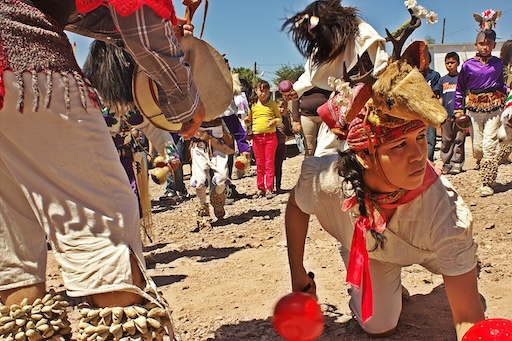 La Danza del Venado – The Sacred Deer Dance of the Yaqui People
La Danza del Venado – The Sacred Deer Dance of the Yaqui People
 Tarahumara Rarámuri – The Ultramarathon Runners of the Sierra
Tarahumara Rarámuri – The Ultramarathon Runners of the Sierra
 La Santa Muerte – The Controversial Saint of Death
La Santa Muerte – The Controversial Saint of Death
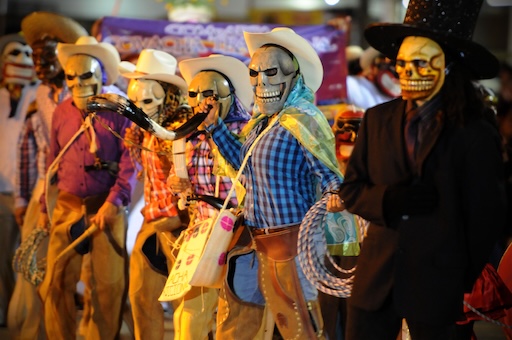 Xantolo – The Huasteca’s Version of Day of the Dead with Masks and Dances
Xantolo – The Huasteca’s Version of Day of the Dead with Masks and Dances
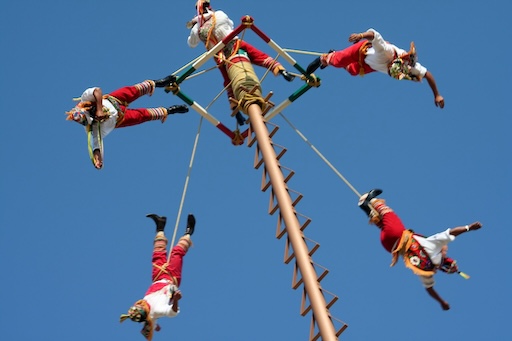 Voladores de Papantla – Men Who Fly from Poles
Voladores de Papantla – Men Who Fly from Poles
 Cenote Sagrado – Sacred Sinkhole of the Maya
Cenote Sagrado – Sacred Sinkhole of the Maya
 Cueva de los Cristales – Mexico’s Giant Crystal Cave
Cueva de los Cristales – Mexico’s Giant Crystal Cave